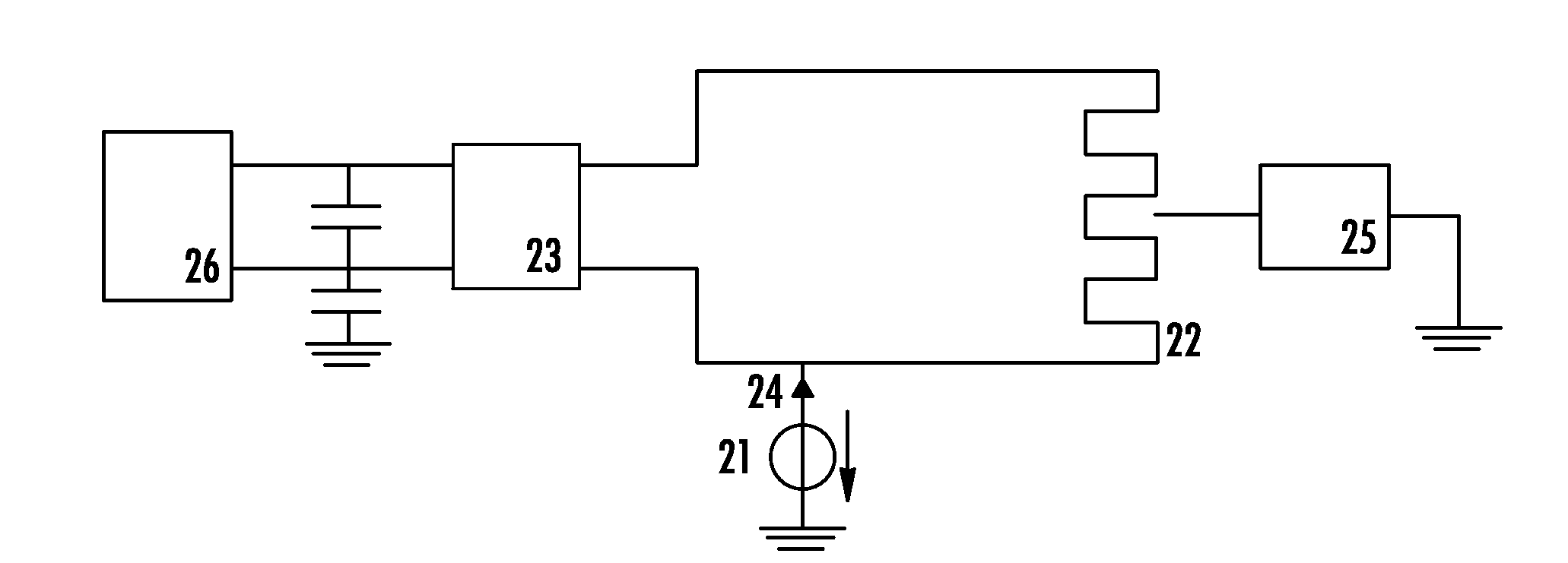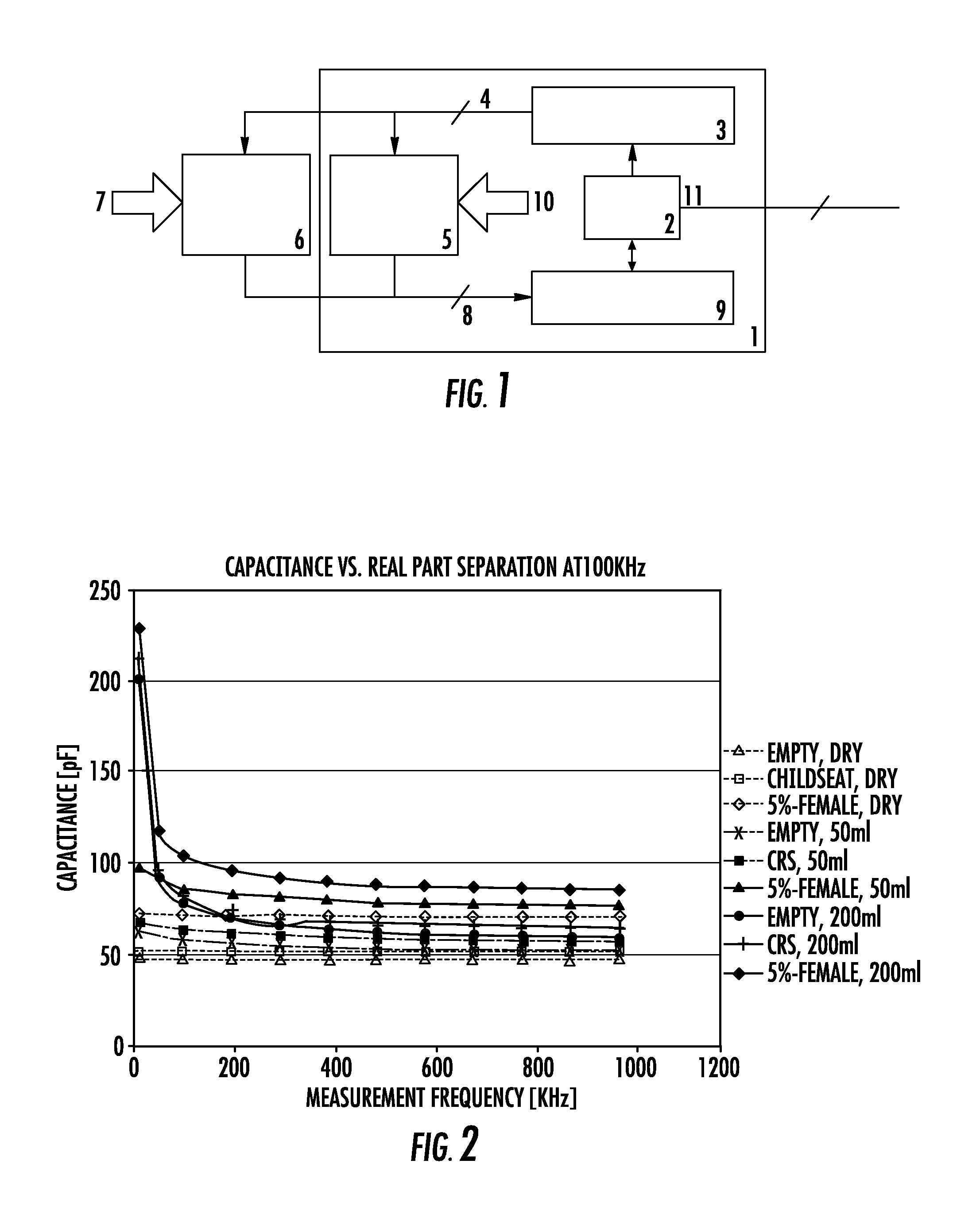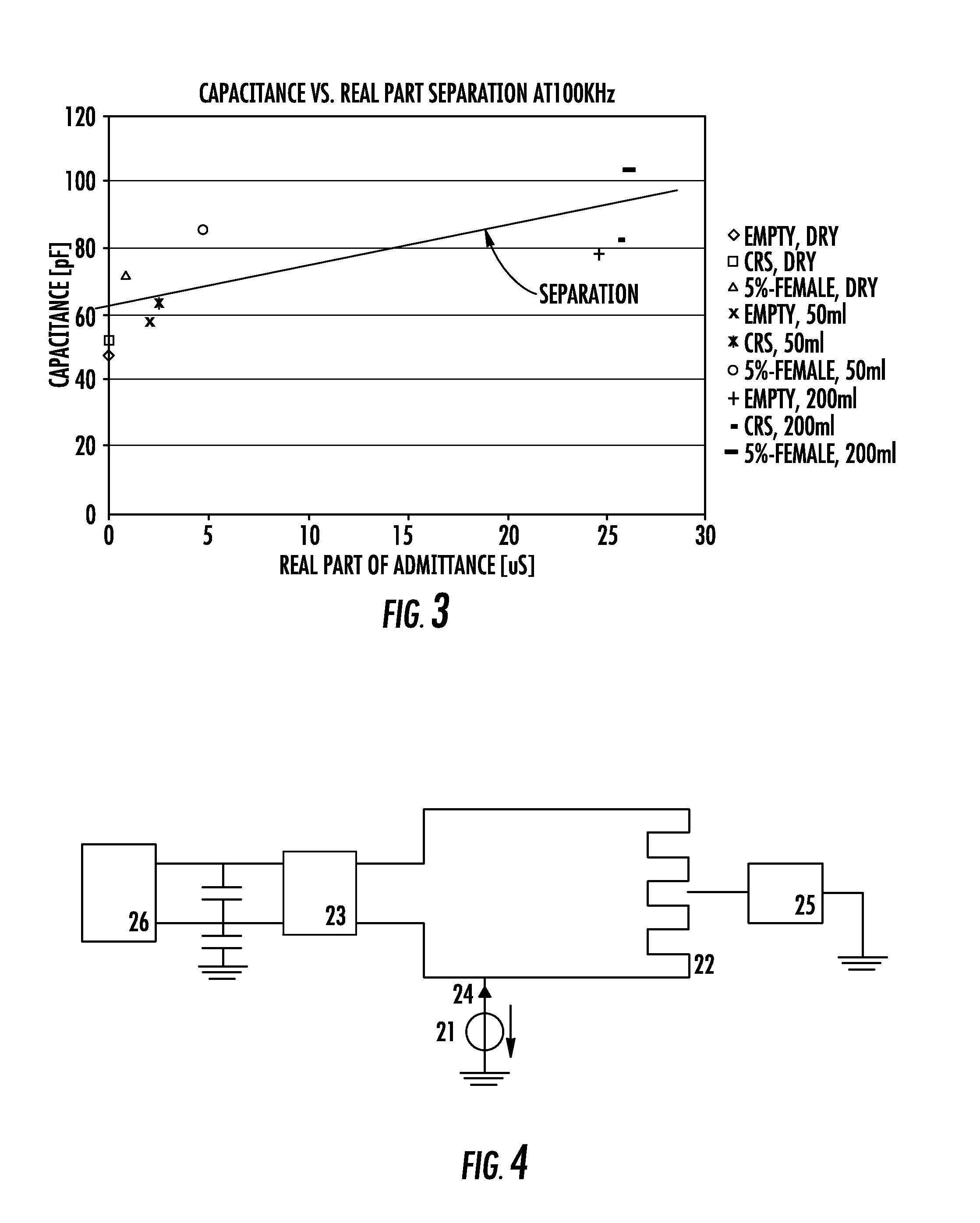Plural-frequency capacitive occupancy sensing system
a capacitive measurement and sensing system technology, applied in the direction of pedestrian/occupant safety arrangement, vehicular safety arrangement, instruments, etc., can solve the problems of large cores of inductor wound on the cores of the inductor, the inductor may not and the inductor may not be able to operate in sensing mode and heating mod
- Summary
- Abstract
- Description
- Claims
- Application Information
AI Technical Summary
Benefits of technology
Problems solved by technology
Method used
Image
Examples
Embodiment Construction
[0035]Capacitive occupant detection systems in the automotive industry, which are used to detect the presence of an occupant in order to activate the airbag in case of a crash, typically determine the occupancy state by measuring the complex impedance / admittance seen by the sensing element (the antenna electrode) arranged in the seat. This sensing element can be one or more electrodes, dedicated exclusively to occupancy detection, or the seat heating element. The determination of the complex impedance / admittance can be achieved by either measuring its real and imaginary parts or by measuring the absolute value and the phase angle of the complex impedance / admittance. This can be done at one or several measurement frequencies to gain more information about the occupancy situation.
[0036]Referring to FIG. 1, which shows the basic structure of a capacitive occupancy sensing system:[0037]1 is the capacitive occupancy sensing system;[0038]2 is a control unit, e.g. a microcontroller;[0039]3...
PUM
 Login to View More
Login to View More Abstract
Description
Claims
Application Information
 Login to View More
Login to View More - R&D
- Intellectual Property
- Life Sciences
- Materials
- Tech Scout
- Unparalleled Data Quality
- Higher Quality Content
- 60% Fewer Hallucinations
Browse by: Latest US Patents, China's latest patents, Technical Efficacy Thesaurus, Application Domain, Technology Topic, Popular Technical Reports.
© 2025 PatSnap. All rights reserved.Legal|Privacy policy|Modern Slavery Act Transparency Statement|Sitemap|About US| Contact US: help@patsnap.com



